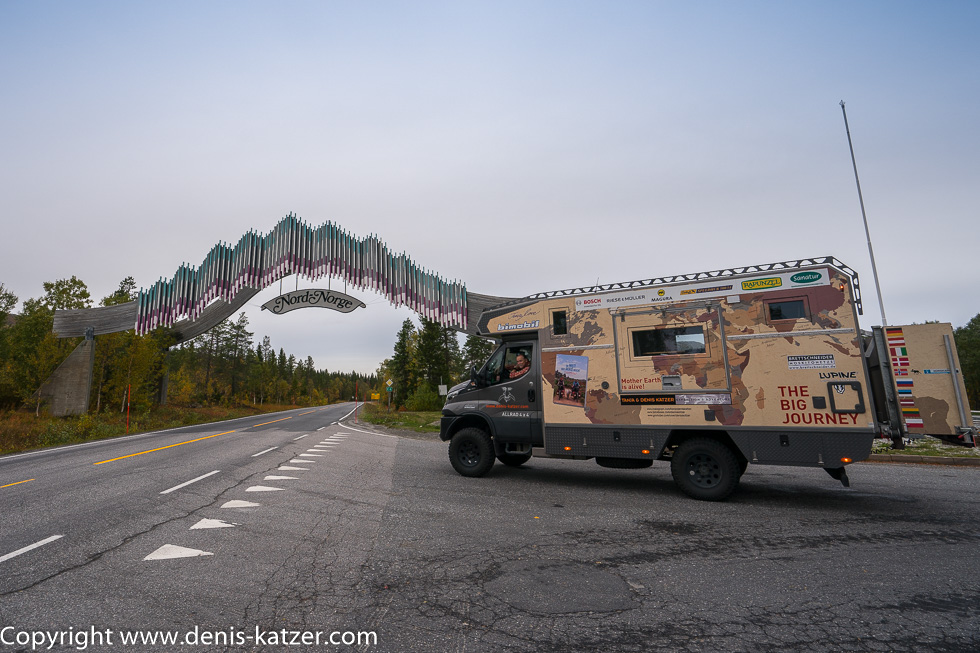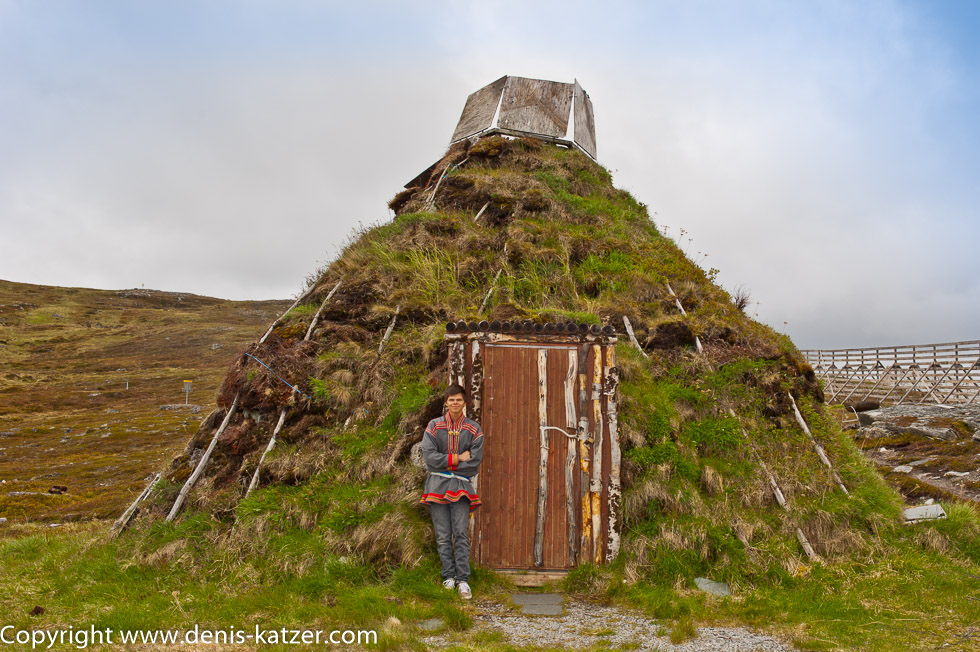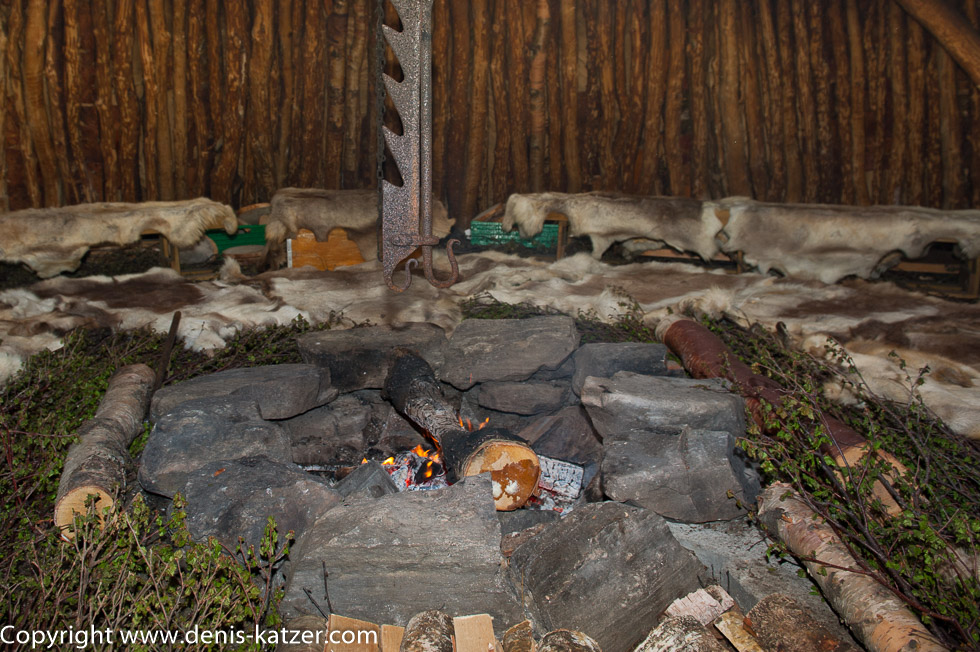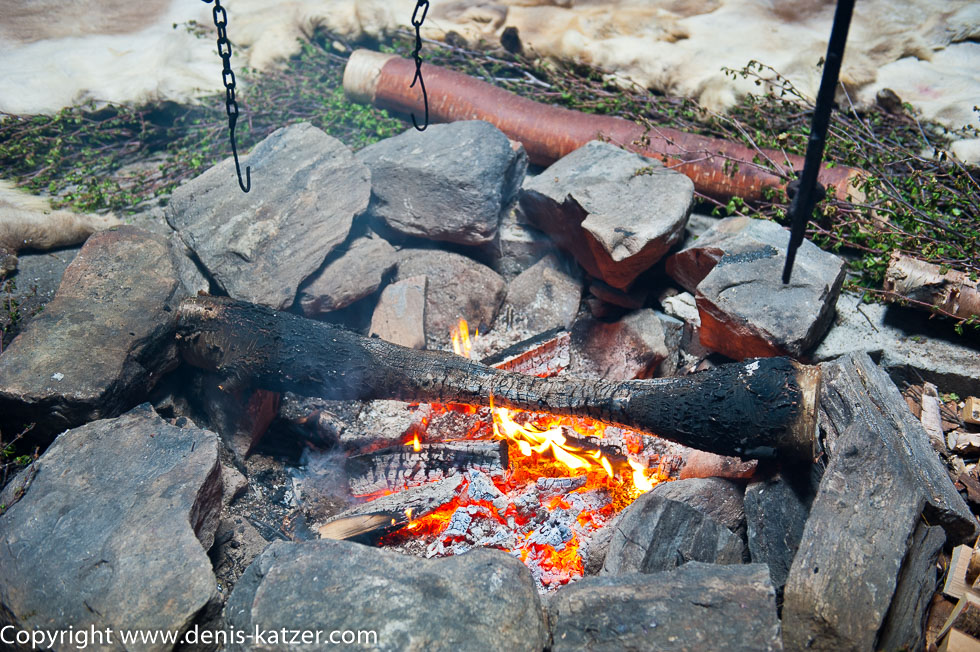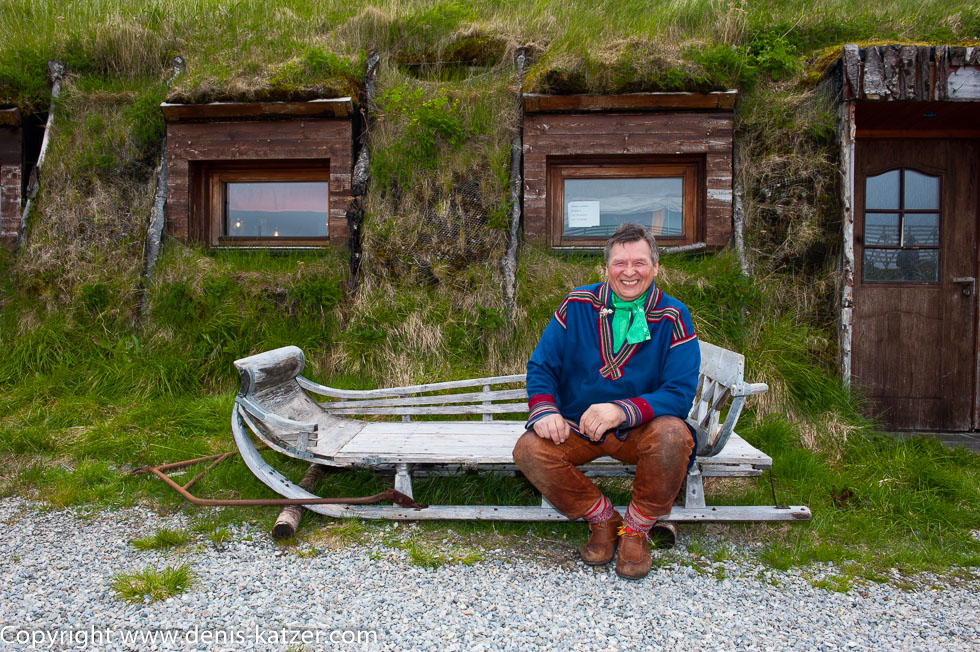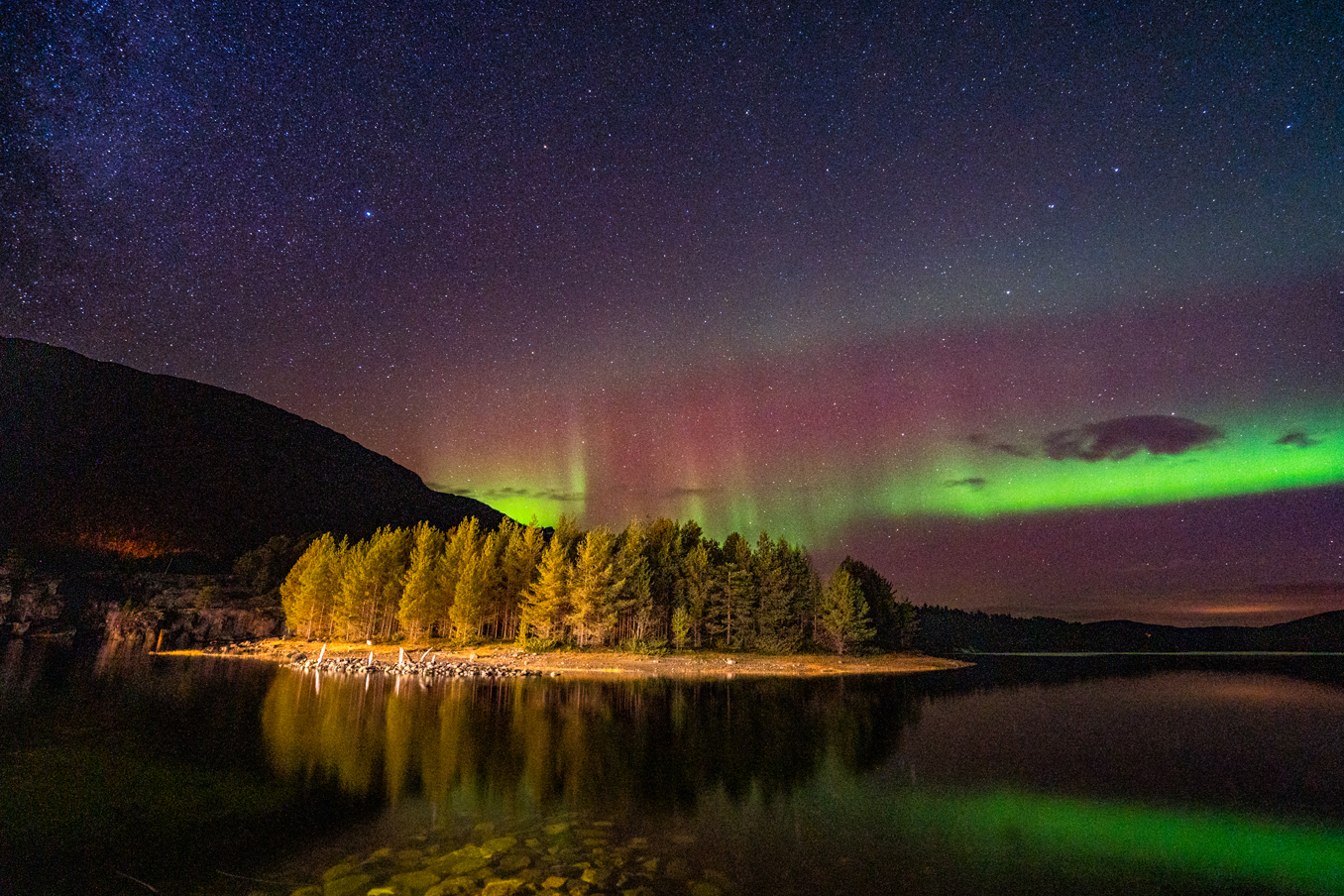
Reaching the far north – oppression of the Sami
N 66°02'55.8' E 013°36'35.8''
Date:
22.09.2020
Day: 051
Country:
Norway
Location:
On the Europastrasse E6
Daily kilometers:
392 km
Total kilometers:
4685 km
Soil condition:
Asphalt
Ferry
0
Bridge crossings:
5
Tunnel passages:
8
Sunrise:
06:41 am
Sunset:
7:16 pm
Temperature day max:
16°
Night temperature min:
10°
Departure:
10:00
Arrival time:
19:00
(Photos of the diary entry can be found at the end of the text).
Click here for the podcasts!
Link to the current itinerary
(For more posts click on one of the flags in the map)
Sunshine and rain alternate today. We follow the excellent E6 and make good progress. The rivers to the left and right of the road overflow their banks due to the heavy rainfall of recent weeks and flood some valleys. The force of the water washes over river islands, drowns resting places and is up to the neck of some trees. The golden autumn colors are still with us and enchant the country with their splendor. “Look at this! Isn’t this the place we were last year?” I shout, pointing to the signpost that shows the distances to the various European cities. “Let’s stop there and stretch our legs a bit,” Tanja suggests. “Nostalgic thoughts?” I ask, a little amused. “Why not,” she replies, laughing as she hops out of the driver’s cab. “Come on, let’s take a picture at the signpost,” she says. “We only did that last year.” “That’s exactly why.” “Okay, why not,” I reply, lifting the camera to my eye and pressing the shutter button. Just like last year, we walk along the banks of the flooded river. “It’s interesting how different the landscape can be. During our last visit here in mid-July, the summer really exploded. I can remember countless insects buzzing through the pleasantly warm air. That numerous flowers were stretching their colorful calyxes towards the sun to give away their nectar in abundance to everything that flies and crawls and now, at the end of September, all the flowers have disappeared, but the landscape shines in golden yellow and orange autumn colors,” Tanja enthuses. “Yes, that’s right and somehow I have the feeling that the coming winter is already reaching for us a little,” I reply as a cool breeze blows in our faces.
A few hours along Europastrasse 6, a kind of wooden archway suddenly appears, arching over the road and stylizing the Northern Lights. “Welcome to the far north!” I shout happily, because we’ve already made it this far. Although we are sitting in a comfortable vehicle, it is not a matter of course to reach the north of Europe. Despite mostly very good roads, a lot can happen on the route. The technology of the vehicle can throw a spanner in the works. An accident could end the journey prematurely. Health is always a factor. A harmonious relationship with your partner and much more are forces that should be taken into account in order to appreciate and enjoy an intermediate goal that has been achieved. Over the last 30 years, we have undertaken and survived some crazy expeditions. We could easily play down moments like this, especially when I compare the current journey with what we have already achieved. But life has shown and taught us time and time again to remain humble, not to compare anything and to appreciate and enjoy the moment. So we are as happy as little children when we drive under the archway with “Nord Norge” written on it and leave the province of Trøndelag to explore the province of Nordland. “What does my travel guide know about Nordland?” asks Tanja with a grin. “Hm, let me think about it. As far as I read yesterday, I know that Nordland is 38,000 km² in size and only 6.3 km wide at its narrowest point and is the longest province in Norway at 650 km. I also know that the indigenous Sami people live here. They still practise reindeer husbandry, at least in part, and were massively oppressed and harassed for centuries,” I say,
and when I take a breath to continue, Tanja asks: “How many seeds live here? Why were they suppressed and by whom?” “Phew, so many questions at once. I don’t know how many live in the province of Nordland, but the number of Sami in Nordwegen is estimated at around 40,000 to 45,000. The centuries-long history of oppression of this nomadic people is extremely sad. We know that they were robbed, abused and persecuted by the Vikings as early as the 9th century, and later in the Middle Ages the then northern European states of Denmark-Norway, Sweden-Finland and Russia began to subjugate the Lapps.” “Lapps? You were talking about the Sami, weren’t you?” “Yes, until not so long ago they called themselves Lapps, but the term Lapp is considered derogatory by some Sámi. I think the word Lappe means ‘edge’ because the Lapps lived in the inaccessible edge areas from the point of view of civilization at the time.” “Okay, I see. And what else happened to the Lapps or Sami?” “As I said, this is very extensive and beyond my level of knowledge, but I can tell you roughly that the countries mentioned started to tax the Sami heavily.” “Tax them? Surely they didn’t have any money?” “No, they were hunters. They took hides from them. The taxes were therefore levied in kind and forced services.” “I can’t believe what we humans do to each other.” “Especially what the strong do to the weak. In this case, nothing has changed to this day.” “You’re right about that. And what happened to the seeds?” “As I said, it’s a long, sad story. In the course of the 19th century, the hunting rights of the Sámi were restricted, which was a disaster for them. Then land in Norway could only be sold to Norwegian-speaking people. This meant that the Sámi no longer had the right to buy land and were forbidden to live in “proper” (rectangular) houses. And you have to imagine that they were forbidden to speak their language until the 1960s, so that some of the Sami languages almost died out. In the 1922s, Lapp studies were carried out to establish that racial mixing leads to the destruction of society. The Sami were then forcibly resettled. In Russia in the 1930s, the reindeer herds of the Sami were forcibly collectivized as part of the general Soviet agricultural policy. As a result, the Sámi of this region lost their free nomadic lifestyle because they were no longer allowed to move around with their herds. The construction of canals, dams, industry and military installations on the Russian Kola Peninsula meant that they lost almost the rest of their existence. As I said, this people suffered from a long, sad history. Today they are the minority in their own country,” I finish my explanation. “Phew, that sounds very sad. And how are they doing today?” “Today they are part of the population, so they have assimilated. In 2000, the government decided to set up a Sami national fund worth around 10 million euros. The aim is to strengthen the Sami language and culture. The money is also intended as compensation for the oppression and injustice of the past decades.” “Only in the year 2000? Quite late, but better late than never,” Tanja snorts. “And what do the Sami in Norway live on today?” she continues. “15% of the Sami still live from reindeer husbandry, some from fishing and tourism and around 60% have modern jobs.” “I didn’t think I would learn so much about the indigenous people of this country when I reached northern Norway.” “There you go,” I reply with a laugh. “But there’s more besides the information about the Sami, isn’t there?” “Sure, sorry I got lost in the subject of the Sami, but you know I have a great love for indigenous peoples.” “You don’t need to apologize. I love your explanations.” “Thank you, so to answer your question, there are about 250,000 people living in the province of Nordland, so Nordland is a fairly sparsely populated region. It also includes the Lofoten archipelago and the southern parts of Vesterålen. The writer Knut Hamsun grew up in Nordland. A man who was awarded the Nobel Prize for Literature in 1920 called the south of the island chain “the most beautiful part of Norway.” Think huge, beautiful landscapes, fjords, mountains, valleys, wide lakes, green forests, the Arctic Ocean and maybe a sighting of a sperm whale and the beautiful northern lights.” “Wow, thanks for the explanation. That really whets our appetite for this region. Nordland here we come!” exclaims Tanja…

